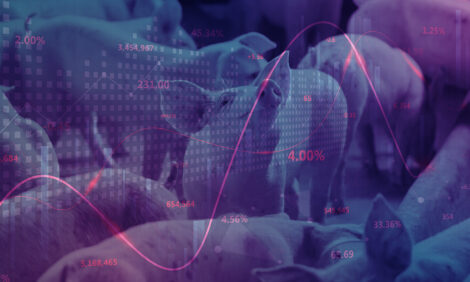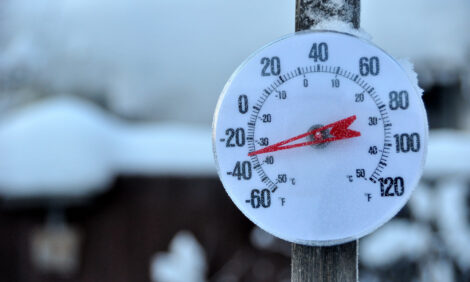



The welfare dilemma: A matter of balancing consequences
By Ian Campbell, Regional Manager, NPA - Striking a better balance between the desire for a 'better life' for the pig on the one hand, and the increasing demands of society for farms to meet the health and safety requirements of food manufacture on the other, is a worthy target. But it does present some very real problems.
 This became evident yet again when Defra officials, scientists, vets, animal welfare organisations and pig industry representatives met to review Defra's pig welfare research programme.
This became evident yet again when Defra officials, scientists, vets, animal welfare organisations and pig industry representatives met to review Defra's pig welfare research programme.
At the last review, held five years ago, three policy objectives were identified:
- Development of an alternative to the farrowing crate, which allows freedom for the sow without compromising the welfare of the piglet.
- Investigation of factors necessary in the environment of growing pigs to enhance welfare.
- Lameness.
The mix of participants at this review was of particular value because differing objectives can present conflicts; what may seem a solution to one problem can present greater negative consequences for the solving of another problem. In such circumstances it is critical that decisions are based on sound scientific research. Research projects to investigate areas of concern regarding the management of commercially farmed pigs have found that potential solutions are not clear-cut in terms of benefit to the health and welfare of the animals themselves.
Farrowing crates
The use of the farrowing crate in the industry has been a particular bone of contention for animal welfarists and has resulted in some strong views being expressed. Research into alternatives has so far failed to demonstrate that the gains to be got for the sow in terms of movement and freedom to express natural behaviour can compensate for the reduction in the health and welfare of the piglets.
There can be little doubt that improvements can be made in the housing of the sow, both for the farrowing period itself and for lactation. But research is suggesting that the benefits for the sow may not be as clear cut as welfarists perceive. Equally, pig producers have to consider the evidence that barren environments have detrimental consequences for the well being of pigs.
Slatted floors
Fully-slatted floors are another particular dislike of the animal welfarists. Research projects to look at solid floored or partially-slatted accommodation - together with various forms of manipulative material enrichment - have not yet answered all the questions.
Professor Sandra Edwards reports on her research to look at the welfare of pigs under different management systems:
"Because of the limited replication to date, definite conclusions cannot be based on this single experiment. However, these preliminary data from multidisciplinary approaches indicate welfare advantages and disadvantages for both housing systems.
"The straw based system provided greater environmental enrichment and reduced behavioural vice but gave greater problems with hygiene, enteric and respiratory disease. The slatted system provided better hygiene but with an increased prevalence of tail biting and gastric ulceration.
"Liquid feeding appeared to offer welfare benefits in the form of greater time spent resting; reduced pig directed behaviour and reduced the severity of gastric ulceration."
Research currently underway at Stotfold is demonstrating a clear economic advantage for fully-slatted, liquid-fed pens - so for the moment producers will be justified in the continued use of fully-slatted accommodation, with the proviso that research continues to look for improvements to enrichment within pen design.
Trials have looked at alternatives to long straw as a manipulable material that will not block up slurry channels, but nothing has so far demonstrated the same level of enrichment.
A study at Terrington into how different slurry-based housing systems impact on ammonia levels, is still running. Early indications are that a partially-slatted system, as favoured by the Council of Europe, would not necessarily benefit the welfare of pigs because of increased aggression, pig directed nosing, standing activity and skin damage.
The Terrington report goes on to say that the use of a rubber mat covering over 50 percent of a UK fully-slatted system could mitigate some of these effects. My own limited experience of such adjustments without significant alterations to ventilation systems would suggest caution.
Tail docking
A paper by Stan Done and Jane Guise on tail docking examined the healing and repair mechanisms with particular reference to long-term pain. This paper was particularly useful since earlier papers had again borne out farm experience of the difficulty in trying to completely stop tail biting by means of alterations to management.
The paper concludes that enrichment of environment, weaning age, air quality and physical condition all play a part in reducing aggression but nothing guarantees to stop it. Therefore, since tail biting is so serious for the welfare of the pig, it is not surprising that tail docking is still condoned by many vets as a necessary practice.
Stan Done's presentation was detailed and examined closely the physical impact on the pig of the docking action:
- Piglet behaviour was not adversely affected immediately after docking.
- The use of the hot iron increases trauma at the site of docking but seals and cauterises the wound.
- Tail ends are not particularly sensitive, which partially explains why the injured pig allows it's tail be bitten in the first place.
- When a tail is cut a neuroma is formed.
- The nature of a neuroma is such that many nerve endings will be generated and these are sensitive. The nerves will congregate at the tip of the tail in an attempt to rejoin with their old connections thus greatly increasing the sensitivity of the stump end and reactivity of the pig to any attempts by its pen mates to bite it.
Lameness
The last priority identified for the past round of research was to look at lameness in pigs.
Osteochondrosis had been identified as a main contributor to degenerative joint problems. A research project was set up to examine a potential dietary effect on osteochondrosis of the growth plate. No progress was made with this experiment due to the expressed lameness problems occurring predominantly as a result of an osteoathritic type of lesion in articulate cartilage, which was not responsive to the dietary supplement.
Conclusion
In conclusion I found this two-day review to be of great value. My friends in CIWF and RSPCA will have been somewhat disappointed with the lack of scientific support for some of their stated objectives.
Nevertheless, we in the industry need to continue to be responsive to those parts of the evidence that indicate we can do more to improve the welfare of pigs on our farms. The normal defence to failure to take action at farm level is 'lack of profit' but it is only part of the story.
A slightly dated paper particularly struck me from Terrington's Roger Kay in which he touched on the negative welfare and financial consequences of mixing pigs a week before slaughter.
My first thought was 'What idiot does that?'. Perhaps the drive to maximise contract opportunities within a tight weight band has increased the number of pigs are held back and mixed after the main group has gone.
Maybe a fresh exposure of the data in that trial would uncover rather more mixed pigs than I had supposed and a re-evaluation of the economic cost of that mixing.
All in all, good to see the scientists demonstrating to Defra that simple solutions rarely exist to the complex problems that pig producers are always tussling with.
In particular it was good to see a paper from Wemelsfelder of Scottish Agricultural College examining a novel means of assessing behaviour and welfare of farm animals.
Twelve pig producers, ten vets and ten animal protectionists were compared.
"All observers showed positive, affectionate and cognitive attitudes towards pigs, but pig producers stood out in their higher emotional reactivity towards pigs and their greater belief that their qualitative assessments accurately reflected the experience of the pigs."
Producers try to tell people that you cannot make a living out of pigs if you don't respect, like and understand them - nice to see some independent confirmation of that fact.
Source: National Pig Association - August 2003
|
National Pig Association THE VOICE OF THE UK PIG INDUSTRY |






